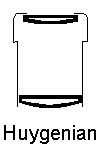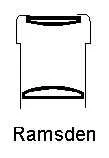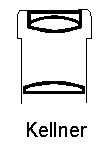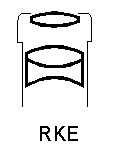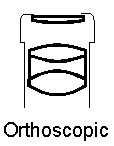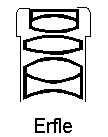kumquat is a plant under the genus of Ratoscopy, also known as golden dates, golden citrus, and little oranges.Originally distributed in the southeast coastal provinces, especially in Guangdong, the oldest history of planting and consumption of golden citrus is the oldest hometown of kumquats.In addition, South China and the middle and lower reaches of the Yangtze River are also widely cultivated.
kumquat is an evergreen shrub.3 meters high, generally no thorns, green branches green, there are many branches when nutritional; leaf lanceolate to oblong, 5-9 cm long, full, petiole is slightly wings; flowers small, white, aroma, 1-3, 1-3, 1-3, 1-3, 1-3, 1-3, 1-3, 1-3, 1-3, 1-3, 1-3Blossoms, petals 5, stamens 20-25, and 5 rooms; fruit oval or ovate, 2.5-3.5 cm long, golden yellow; fruit spherical is Japanese kumquat.Appreciate the leaves, fruits, or the production of orange cakes for the production of fruits. After the potted plants, it is well managed, and the grafting method is used.A small golden orange that can settle more than 10, and the spring Festival is generally exported to Hong Kong, which is very popular with Hong Kong people.
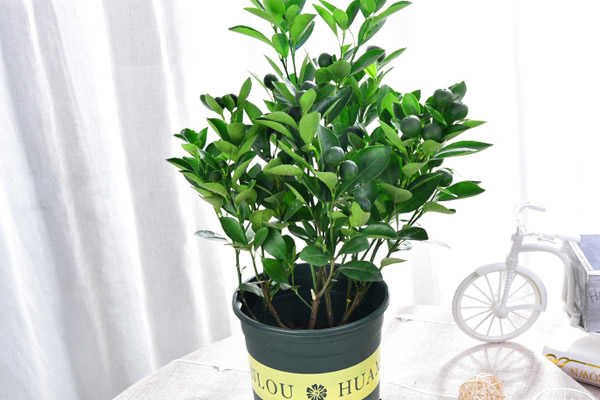
Morphology
Short or small trees, 3 meters high, evergreen without thorns and branches.
leaf
kumquat's leaves are lanceolate to round torque, 5-9 cm long, 2-3 cm wide, full or unknown fine serrated, dark green on the surface.bright.The back of the back is green and there are scattered glands; the petiole has narrow wings, and the joints are located at the border of the blade.Single flowers or 2-5 flowers are gathered in leaf axils with short handles.
flower
kumquat's flowers are neat, white, aromatic; sepals 5; petals 5 mm, about 7 mm long, and 20-25 mm in stamens, which are combined with several bouquets to different degrees; pistils are born on the slightly rising flower plate.fruit round or ovate, golden yellow.The meat is thick and thick, Smooth, with many glands and fragrance.4 5 meat.
seed
seed oval spherical
Breeding method
Kumquats are grafted and reproduced.The rootstock is citrus, lime or sowing real seedlings. The grafting method has branches, buds, and reliance, and branches.The buds are carried out in June-September, and potted plants are commonly used by connection, which are carried out in April-July.
How to breed kumquats
1. Moderate light
kumquat -sex warm and humid climate,
Put in a sunny place when maintenance.If the light is insufficient and the environment shade, it will often cause the branches and leaves to be long, and there are fewer flowers.Because kumquats are cool in summer, or in summer, it is better to put it on the shade at this time.
It is advisable to refuse to freeze in winter.If the room temperature is too high and the plants cannot be fully dormant, the growth of the following year is weak, and it is easy to fall into the bud.
2,Cleverly
Pruning is an important technical measure to make kumquat flowers.In order to make the tree -shaped shape and many results, before the start of the sap up every year, the spring buds have been re -pruning when they have not germinated, cut off the dead branches, diseases and insect branches, dense branches, and long branches, and retaining 3 to 4 heads of age and robustness.The proportioned branches are separated, each branches only leave only 2 to 3 buds at the base, and the rest are cut off.This can germinate more than 10 full spring slightly.When the new is slightly longer to 15-20 cm, topping is made to make the plant shape plump. At this time, the speed -effective phosphorus Fertilizer is applied to promote the differentiation of flower buds.When blooming, it should be appropriately sparse to save nutrients.
After having young fruit, when the young fruit grows to about 1 cm in size, it can be carried out with 2 to 3 fruits per plant, and each branch of the weak branches keeps one fruit and makes the whole plant uniform.Cut the autumn a little in time, and do not make the second result, consistent with the size and maturity of the fruit, and increase the value of ornamental.
3. Apply full Fertilizer
Kumquats are like Fertilizer. When potted plants, 4 parts of corruption, 5 parts of sand, 5 parts of sand, and 1 cake Fertilizer are mixed with cultivation soil.When changing the basin, apply the hoof slices or rotten cake Fertilizer as the base Fertilizer on the bottom of the pot.From the beginning of the new buds to the beginning of flowering, you can apply the rotten light sauce dregs every 7 to 10 days to pour alum Fertilizer several times.
After the summer, we should apply more phosphate Fertilizer to facilitate pregnancy and results.As a result, fertilization should be suspended in the early stage. When the young fruit grows to about 1 cm, it can continue to apply liquid Fertilizer once a week until the end of September.
4. Water water
Kumquats are moist but avoid water, and the pot soil is too wet to rot.Therefore, it is better to keep the pot soil moist during the fertility.spring is dry and windy.Spray water once a day to increase the humidity of the air.Spray water 2 to 3 times a day in summer and spray water on the ground.But avoid spraying during flowering to prevent rotten flowers and affect the results.
The rainy season should be dumped in the basin in time to avoid rotten roots.When placing outdoors in summer, it is best to use bricks to pad the Flower pot to facilitate drainage.The requirements of kumquat white flowers to the young fruit period are more sensitive to moisture.At this time, the pot soil is too dry, and the stem stems and the fruits are easy to produce off the layer and fall off; excessive watering, the poor water permeability of the pot soil, and it is also easy to cause falling flowers and fruits.Therefore, at this time, it is advisable to make the pot soil keeping the semi -tadpole.
5. Treatment of insect pests
Many years of practice has proved that kumquats have not found diseases, only Huangfeng Butterfly (also known as citrus phoenix butterfly) harm.So don't think kumquats are harmful.becomeThe insect body is 30 mm long, the wings are 100 mm, yellow -green, and the back has a large black longitudinal pattern.The front wing is one day, 6 posterior wings.The egg is spherical, with a diameter of 1 mm, yellow and white.The larvae feed the new leaves, and the daytime eating and night eating can easily cause kumquat leaves to lack or glow.
The governance of this insect pest: spray 50%of the larvae to kill the pine 1000 times liquid or 80%of the dichlorvos of 1000 times liquid, capture insecticidal pupae outside the branch.
6. Disease prevention and treatment
Ulcer disease
Harmly leaves, branches slightly harmonious fruit, causing fallen leaves and falling fruit, and the back of the leaves starts with yellow stains.
The spots gradually expanded in the future, raised on both sides, rough and lignified, in the middle of the cracked, finally gray -brown, ulcer -shaped, yellow halo rings around them, severe cases caused by fallen leaves, and ulcer germs spread with the wind and rain.20 to 30 C and moist climate are the most serious.
Control measures:
(1) Reasonable fertilization.Prevent new leaves from growing too fast and enhance disease resistance.
(2) Drug prevention:
First, use 0.25 kg of copper sulfate, 0.5 kg of lime, and 50 kg of water with water spray into Bordeaux.
Second, spray with 600 times the ammonium ammonium.
Third, 600 times with antibacterial special.
Fourth, spray 800,000 units (that is, about 100 kilograms of water) spray.
anthrax
Harmly symptoms: Anthrahumin is harmful to leaves, branches, and fruits, and in severe cases, the branches are slightly dry and fruitful.The harm of the seedlings will cause the branches and leaves, and the whole plant will dry out in severe cases.This disease generally occurs at kumquat bases.
Control measures:
(1) Strengthen cultivation management, strengthen tree momentum, increase Organic fertilizer and Potassium fertilizer, do a good job of weeding of pine soil in the orange garden, and maintain moderate wet and dry.
(2) Clear, disease leaves, sick branches, etc.
(3) 5%to 800 times with 5%Domori ammonium.Or antibacterial special 600 times spray.Spray once every 10 days apart, and twice continuously.
The effect and role of kumquat
1. Observation value
kumquat fruit is golden and fragrant, and the fruit Hanging time is long.
It is excellent fruit watching flowers.It should be used as potted plants and bonsai, and its taste is sweet and sour, and it has multi -nutritional value.Warm it in the south, and its fruit trees are also planted.Potted kumquats are green in the four seasons, with lush branches and leaves.summer flowers, colorful and white, the aroma is far away.In autumn and winter, it is cooked or yellow or red, embellished in green leaves, which can be described as Bitao Gold Pills, supporting Shouyong, and high ornamental value.
2,Edible value
Kumquats are not only beautiful, but also rich in ingredients such as vitamin C and kumquats, which have a certain effect on maintaining cardiovascular function and preventing diseases such as vascular sclerosis and hypertension.As a health care product, kumquat honey crickets can be used for appetizing. Drinking kumquat juice can quench thirst, add radish juice and pear juice to cure cough.The specific edible value is as follows:
Kumin has a good effect on preventing blood vessels from rupture, reducing capillary brittleness and permeability, and slowing blood vessel sclerosis;
kumquat can produce two -way regulation of blood pressure. Hypertension, vascular sclerosis and coronary heart disease are very beneficial;
Kumquett has the effect of qi and depression, eliminating food and chemical phlegm, and has the function of sobering up and sobering;
Frequent kumquats can also enhance the body's cold resistance and prevent colds.
3. health care function
Beauty Skin care
Kumquats can prevent pigmentation, improve Skin gloss and elasticity, slow down aging, and avoid Skin relaxation and wrinkles.
appetizing Shengjin
Kumquats can be appetizing as food therapy health products. Kumquats can appetite. Drinking kumquat juice can quench thirst, add radish juice and pear juice to cure cough.kumquat medicine is sweet and warm, can relieve qi and relieve depression, and reduce phlegm.
Prevent chronic disease
Kumquats have a certain effect on maintaining cardiovascular function and preventing diseases such as vascular sclerosis and hypertension.
precautions for kumquat farming
1. Water spraying in the flowering period should be prevented from sprouting, and water is not sprayed on the open flowers. This is neither conducive to pollination, nor can it cause rotten flowers.
2. Kumquats are warm and humid and sunshine. It has been placed in the insufficient sunlight indoors for a long time. The plant is weak and affects flower bud differentiation and results.
3. kumquat like acidic soil. Potted plants in the north can be poured once a week to taste Fertilizer water, or potassium dihydrogen phosphate, or fertilizes with 200-250 times per week.There are many results.
4. Potted kumquats require proper management of water and Fertilizer.Before the spring bud germination, cut off part of last year, and the robustyone left 2 to 3 buds, and each plant was left with three pruning 1 year -old branches, which is conducive to the germination of spring shoots. When the new buds grow to 15-20 cmfull.When the branches are long, the speed -efficient phosphate Fertilizer is applied, such as calcium phosphate, long -term anti -branches and leaves, and promoting flower bud differentiation and flowering results.At the end of May, the spring shoots were blooming and fruitful. The flowering period should be appropriately sparse. After the fruit, the fruit is weak and sparsely fruit.Cut the autumn shoots in time to prevent secondary results.
